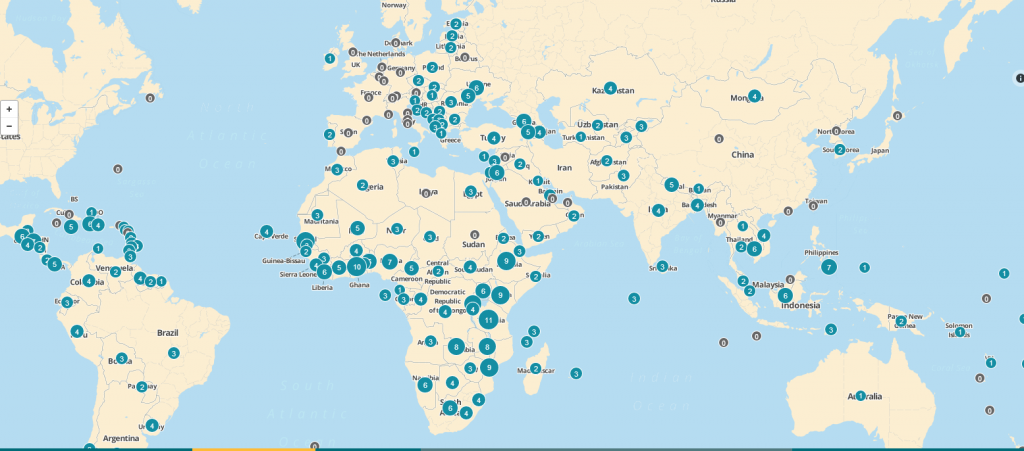US Development Initiatives: Where in the World Are They?
Guest post by Rob Morello, Center for Global Development

Last week, Ben Leo and I launched a beta version of US Development Initiatives: Where in the World Are They. It allows users to geographically explore US development policy efforts as well as the quantity of aid commitments and the magnitude of trade and investment. Do you want to quickly see where OPIC is active? Where the US has a bilateral investment treaty, trade preferences, or a free trade agreement? Or, what are the partner countries for Feed the Future, PEPFAR, or other aid initiatives? With one or two mouse clicks, this new tool will give you the answer.
Following the beta launch, I expected feedback on our data presentation and functionality. “Your color scheme clashes. Your circle for Canada is too far north.” Although some users have sent great suggestions in this vein, most people have surprisingly reached out about the content itself. “Where did you find all this information? Can I download it?”
To answer the curious user: the map has 1500 data points gathered from 18 different sources on 237 countries and territories. Our sources are linked from the map, and we have the data available for download on the resources page.
But, why was there so much interest on substance rather than presentation? Our tool has become the only public, comprehensive resource on US development initiatives. It’s the only place to find all of this information in one place. Users can now see that Vietnam participates in three aid initiatives and is OPIC eligible but doesn’t participate in any trade initiatives (although TPP may change this). They are even observing trends within a single agency such as the fact that high income, OECD country Portugal is OPIC eligible and had an OPIC project in 2013.
Nonetheless, the US government shouldn’t leave it to us to answer where its development initiatives are.
I should acknowledge that USG has made great strides to have a transparent, comprehensive resource in foreignassistance.gov, but even this resource doesn’t track trade or investment. It also only has information on five of the eight aid initiatives which we map.
I spent about 15 hours gathering the map’s content. I greatly benefited from notes left by my professional predecessor and the researchers at the Center for Global Development. And, despite our best attempts to include all active development initiatives, we inadvertently left out the President’s Malaria Initiative (PMI). We also used an outdated specification for the President’s Emergency Plan for AIDS Relief (PEPFAR). Look for an updated version soon.
Despite this work, we were still unable to include some information simply because it’s unavailable. US foreign direct investment may actually be the most impactful engagement with developing economies. In terms of magnitude, investment is far greater than aid flows. The US Bureau of Economic Analysis publishes information on US direct investment abroad. The yearly “flow” data was missing for so many countries that we chose to use the cumulative totals which still included some missing values. Although some information is understandably suppressed to protect trade secrets and individual company disclosure, I hope that the BEA is able to be more transparent in the future. Without available information, the development community cannot fully understand this flow’s impact.
Presidents create their development legacies by using initiatives to focus interagency efforts toward specific goals. The Administration must go beyond headline-grabbing presidential announcements to make initiatives live up to their full potential. It should launch a single resource that tracks participating countries, related appropriations, and outcome measures.
Once we have a resource like this, we can begin to see how these initiatives work together and start to improve their overall effectiveness. DevelopmentInitiatives.gov, anyone? But for now, we’ll have to get by with our map.
 Rob Morello is a research assistant at the Center for Global Development in Washington, D.C..
Rob Morello is a research assistant at the Center for Global Development in Washington, D.C..


What about CDC initiatives, eg in China? http://www.cdc.gov/globalhealth/countries/china/
Why not use OECD DAC? (Or maybe you did?)